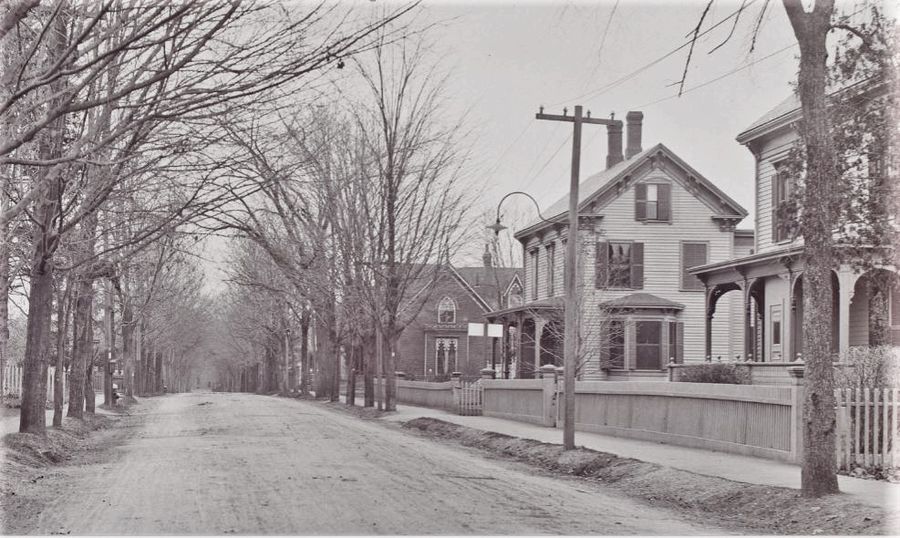
The street lamp fixture shown is on one of the "gooseneck" bracket designs of the day with a conical reflector, approximately 14 inches in diameter. The early shades on these were made in two pieces: the deflector portion was on top and the reflector on the underside. They usually attached together via metal clips. Customers who ordered them had the option of either section coated with porcelain enamel or white paint (the latter applies to their undersides). There were several slightly differing fixture designs of this general type through the teens. Most were designed for series street lighting service. The earliest ones (around 1890) utilized any of several incandescent lamp bases. All had to include some sort of shunting or automatic bypass in the lamp socket and/or in the lamp base to "short-through" electrically in order to keep the rest of the lights in their series string illuminated in the event a bulb failed. Basically this early principle is the same as modern incandescent Christmas tree lights also which run in an electrical series and have a small shorting wire inside their tiny bulbs that bypasses when one of them fails, thus keeping the remainder of the string lit. Click "Next" for a close look at the top of this pole with its crossarm, insulators, wires and street lamp. Despite competing types of street series lightbulbs having differing socket bases, General Electric's Edison Screw Base began winning as the standard type to use by 1903. These lightbulb bases were the "mogul screw" type. They inserted into porcelain sockets that had a pair of brass bayonets attached to the top of the socket. In between the tightly mounted prongs was a wafer or disc that provided instant circuit continuation upon lamp burnout, etc. The pronged socket was then pushed up into the street fixture's mating receptacle where wire attachments were made to the pole. This pretty much was a failsafe method and has continued in practice ever since the early 1900s where series street lights still might be in service. Conversion kits were available whereby older fixtures with other socket and receptacle designs could be readily converted to the Edison screw-base type with plug-in sockets/receptacles. Of the four wires on this early pole I believe two of them went to lighting customers and the other two operated the street lighting circuit. |